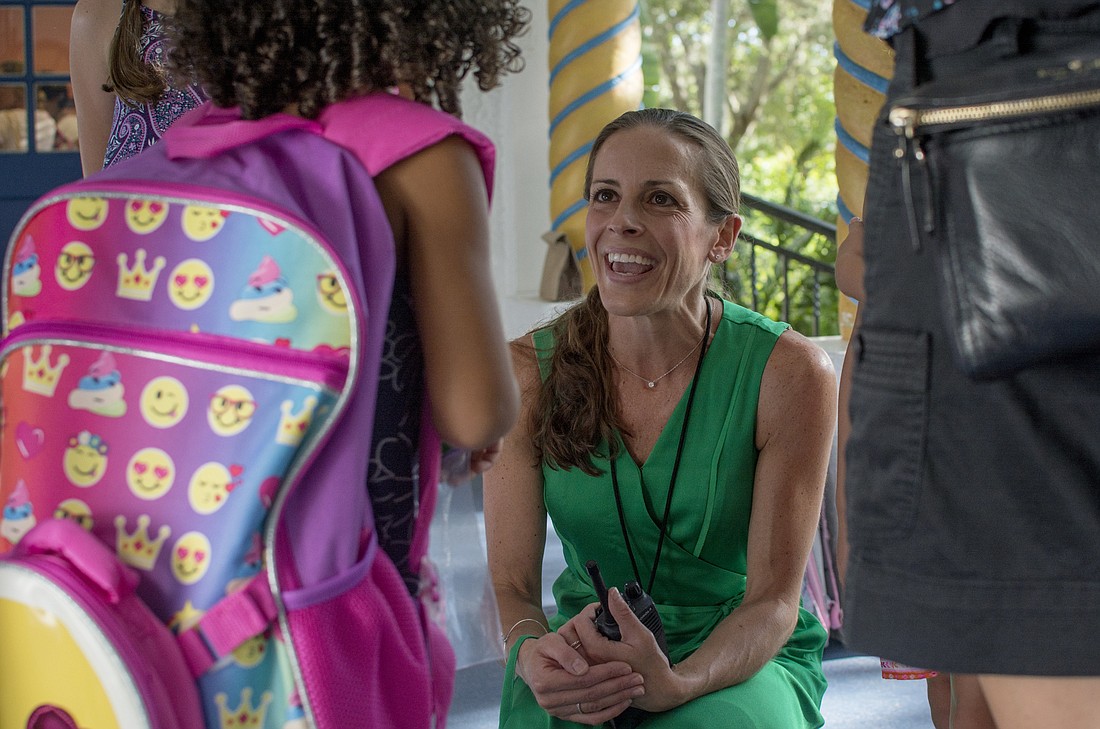- October 23, 2024
-
-
Loading

Loading

Typically, the first day of school means backpacks brimming with new supplies and students showing off their new clothes or hugging friends they haven’t seen in months.
However, if federal health officials are still recommending social distancing come August, the first day back to school could look very different in Sarasota County and could result in a third semester in 2021 to catch up to learning shortcomings attributed to the tumult.
In anticipation of a late decision, district leaders have announced two possible paths for reopening schools, though they say the plans are still likely to change. Cost estimates and sources of revenue to pay for them are still undetermined.
Plan one, which district leaders say is the less extreme option, would take into consideration added safety measures but would allow the district to run as close to normal as possible.
Plan two is on the other extreme, requiring a rethink of bus routes, what campus children would report to and more remote learning for older students.
Already, the district is bringing in extra personnel to help facilitate whichever plan the district decides to go with, Chief Operations Officer Jody Dumas said.
The options, however, are preliminary.
“Hopefully, we’ll have a much stronger plan in place by the end of July,” interim Superintendent Mitsi Corcoran said. “We’re still a good 75 days out from when school starts.”
Plan 1: return to school with enhanced safety measures
Under plan one, the district would set up classrooms to allow for greater distance between student seating, limit activities that require close contact as much as possible and create one-way hallway patterns.
Additionally, students and staff might continue to wear face masks on the buses, and sanitation protocols will be followed after each bus run.
Each child’s belongings will be separated, and high-touch materials, such as doorknobs or desks, will be cleaned and disinfected after each use.
Digital textbooks would be used on school-provided devices, which would be one per student.
Students also would be expected to wash their hands for at least 20 seconds every hour.
The district would eliminate perfect attendance awards to emphasize that students showing symptoms of illness should stay home.
Plan 2: return to school with 6-foot safety measures
If the CDC still recommends 6 feet of space between people in August, the district will aim for elementary and middle school students to have in-person instruction throughout the district’s campuses while high school students would stay home.
The idea is that the younger students who need more hands-on instruction will receive it, and parents of younger children would not need to find child care.
“This is the really challenging plan,” Dumas said. “Right now, we have people looking at every space in the district and saying, ‘If we have to socially distance in this room, how many people can we put in this room at one time?’”
After district officials determine each school’s capacity, they will then begin to spread as many students as possible across the school sites, prioritizing the youngest students.
Under the proposal, pre-K through third grade could be housed in elementary schools, fourth through sixth grade would be housed in the district’s middle schools, and seventh and eighth grade would move to the high school buildings.
High school students would continue with remote learning.
Bus transportation would radically change, beginning with a reduction in capacity from about 65 to about 13, requiring multiple round trips and possibly staggered school start times.
Some suggested taking students’ temperatures as they get on the bus, but others worry about the logistical issues.
“Do we want to stop a school bus on Clark Road for 10 minutes while they’re taking temperatures?” Corcoran said. “It becomes very dangerous.”
In the schools, students would be kept with the same teacher as much as possible and given lunch in the classroom.
Time will be built in for students to wash their hands hourly, and an on-site nurse will administer daily health screenings, which could include temperature checks.
Impacts
There are a variety of financial and academic impacts leaders have associated with both plans.
With either plan, there is increased personnel and operation changes that are necessary to adhere with guidelines. However, these additional protocols will cost the district money that it didn’t account for in its budget, which is expected to see reduced revenues due to the pandemic.
Additionally, leaders anticipate that should remote learning continue, many students could fall behind academically.
During the first weeks of school, students will take tests to ascertain their progress after months of remote learning.
Although online learning has been difficult, Assistant Superintendent and Chief Academic Advisor Laura Kingsley said teachers have been responding well and will continue to do so with whatever plan the district might choose.
“It’s really all about personalizing the instruction for every child,” Kingsley said. “This is how we need to move forward. So we want to accelerate the learning, and that is filling in the remediation for any child that may need it but also extend learning for those who are already there.”
Decision-makers are preliminarily discussing what it would take to make summer 2021 a third semester.
By eliminating summer break, leaders hope students would get back on track quickly.
Finally, officials are working on a plan to address students’ social and emotional well-being after they return from months of social isolation.